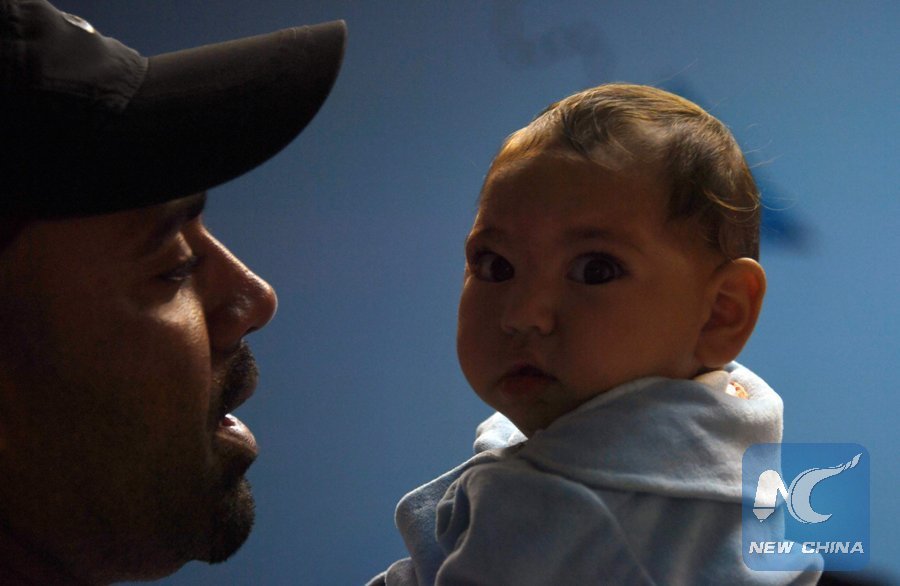
Paulo Sergio (37) holds his six-month-old baby Arthur Meneses as they wait for medical exams at the State Brain Institute (IEC) in Rio de Janeiro, Brazil on January 2, 2017. Arthur's mother was infected with the zika virus, transmitted by the Aedes aegypti mosquito, while pregnant and her son was born with microcephaly, during a 2015-2016 wave of babies born with that condition, which involves a smaller-than-normal head size. (Xinhua/AFP PHOTO)
WASHINGTON, Jan. 25 (Xinhua) -- Birth defects have increased in parts of the United States that had local Zika virus transmission in 2016, a new report from the U.S. Centers for Disease Control (CDC) and Prevention said Thursday.
Areas with local transmission of Zika -- southern Florida, a portion of south Texas, and Puerto Rico -- saw a 21 percent increase in birth defects in the second half of 2016 compared with the first half of that year, according to the study published in CDC's Morbidity and Mortality Weekly Report.
Researchers said it's not known if this increase is due to local transmission of Zika virus alone, or if there are other contributing factors.
Most of the mothers who had babies with the Zika virus-linked birth defects did not have laboratory evidence of Zika virus infection, they said.
The mothers either were not tested, were not tested at the right time, or were not exposed to Zika virus.
For the study, CDC researchers looked at nearly one million births in 2016 in 15 U.S. states and territories, and found about three out of every 1,000 newborns had a birth defect possibly associated with Zika virus infection in the mother.
About half of the babies with birth defects were born with brain abnormalities or microcephaly, which causes abnormally small heads.
The other half had neural tube defects, eye abnormalities, or nervous system damage such as joint problems and deafness.
Because many pregnant women exposed to Zika virus in late 2016 gave birth in 2017, CDC researchers anticipated that there could be another increase in possible Zika-related birth defects when 2017 data are analyzed.
"Babies with Zika-related birth defects need all the help they can get, as soon as possible and for as long as they need it," CDC Director Brenda Fitzgerald said in a statement.
"This report highlights the critical importance of documenting birth defects possibly related to Zika and our need to maintain vigilance," Fitzgerald said.
Zika is spread mostly by the bite of an infected Aedes species mosquito and can be passed from a pregnant woman to her fetus.
There is no vaccine or medicine for Zika so far.

